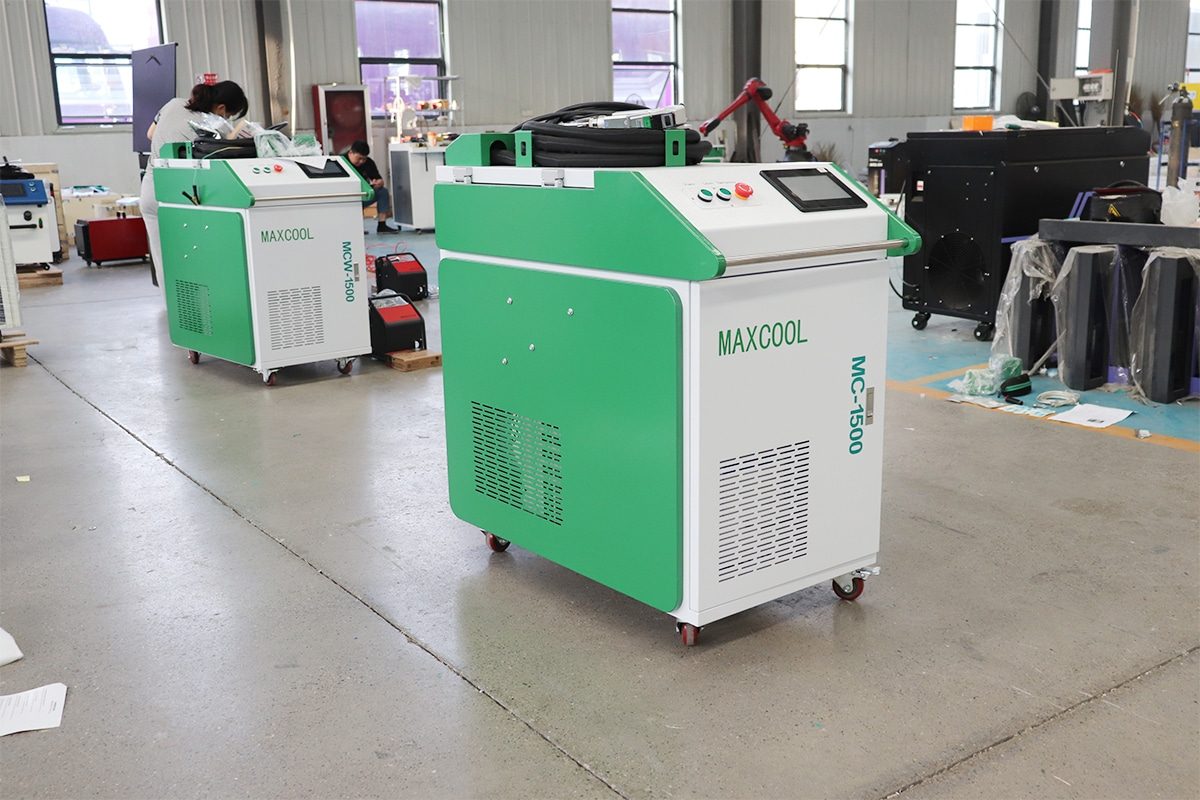Effective cooling is crucial for maintaining optimal performance, safety, and longevity in laser cleaning machines. The two main types of cooling systems used are air cooling and water cooling. Each system has distinct characteristics that make it suitable for specific applications, power levels, and operating environments.

Air Cooling Systems
Air cooling systems utilize ambient air to dissipate heat generated by laser cleaning machines. The heat produced by the laser source, optics, and electronic components is absorbed by heat sinks, which transfer the heat to the surrounding air through convection. Fans are often employed to enhance airflow over the heat sinks, improving heat dissipation. Air cooling systems are commonly found in low to medium-power laser cleaning machines due to their simplicity and cost-effectiveness.
Advantages
Simplicity: Air cooling systems have fewer components compared to water cooling systems, making them easier to maintain and operate.
Cost-Effective: With lower initial investment and minimal maintenance requirements, air cooling systems provide an economical solution for low to mid-range laser cleaning applications.
Compact Size: These systems are relatively compact and lightweight, making them ideal for portable or handheld laser cleaning machines.
No Water Handling Required: Air cooling eliminates the need for water circulation, making it suitable for environments where water supply or management may be challenging.
Water Cooling Systems
Water cooling systems use a liquid coolant, typically water mixed with additives, to absorb and transfer heat away from the laser source and other critical components. The coolant is circulated through the system by a pump, passing through a heat exchanger where it releases the absorbed heat before being cooled and recirculated. Water cooling is preferred for medium to high-power laser cleaning machines due to its superior heat dissipation capabilities and precise temperature control.
Advantages
High Cooling Efficiency: Water cooling systems are significantly more effective at dissipating heat compared to air cooling. This makes them suitable for high-power laser cleaning machines, where effective thermal management is essential.
Precise Temperature Control: These systems provide stable and accurate temperature regulation, maintaining optimal operating conditions for the laser components and enhancing cleaning performance.
Independence from Ambient Temperature: Unlike air cooling, water cooling systems are less affected by fluctuations in ambient temperatures, ensuring consistent performance regardless of environmental conditions.
Reduced Noise: Water cooling systems tend to operate more quietly compared to air-cooled systems, as they rely on the circulation of coolant rather than fans.
Maintenance and Care of Cooling Systems
Proper maintenance and care of the cooling system in laser cleaning machines are essential for ensuring optimal performance, preventing equipment breakdowns, and extending the lifespan of both the cooling system and the laser machine itself. By implementing a proactive approach, operators can maintain the efficiency and reliability of their systems while minimizing downtime.
Daily Checks: Inspect coolant levels, monitor temperature readings, and check for any visible leaks or damage in the cooling system components. Ensure that pumps, fans, and other active elements are functioning correctly.
Weekly Inspections: Clean air filters, inspect the condition of tubing or pipes, and ensure there are no blockages or obstructions in the coolant flow path. For air-cooled systems, verify that fans are clean and unobstructed to maintain airflow efficiency.
Monthly Maintenance: Test temperature sensors, flow meters, and control valves to ensure they are providing accurate readings and functioning as expected. Inspect and tighten any loose connections or fittings to prevent leaks or disruptions in coolant flow.
Quarterly Servicing: Conduct a thorough inspection of the entire cooling system, including the heat exchanger, pumps, and chiller (if applicable). Perform a system flush to remove any sediment or impurities that may have accumulated. For air-cooled systems, clean heat sinks and check for dust buildup that could affect heat dissipation.
Annual Maintenance: Perform a comprehensive evaluation of all cooling system components, replacing worn parts as needed. Inspect the electrical connections of pumps, sensors, and control units to ensure proper operation. Consider updating the coolant if it has reached the end of its service life.
The cooling system of a laser cleaning machine plays a pivotal role in maintaining optimal performance, enhancing safety, and extending the lifespan of critical components. By efficiently managing and dissipating the intense heat generated during laser operation, cooling systems ensure consistent cleaning quality and prevent thermal damage to sensitive parts. There are two main types of cooling systems used: air cooling and water cooling. Each system offers unique advantages and is selected based on factors such as laser power, operating environment, and cooling capacity. Effective cooling system management involves regular preventive maintenance, proper coolant management, and timely replacement of worn components. Through diligent care and advanced cooling strategies, laser cleaning machines can deliver reliable, precise, and efficient cleaning solutions across diverse industrial applications.
Comments on “Laser Cleaning Machine Cooling System Type”